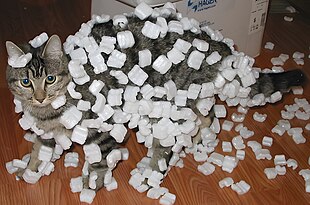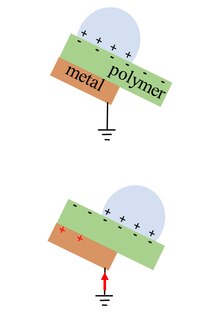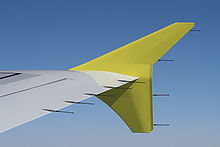
Electricity is the set of physical phenomena associated with the presence and motion of matter possessing an electric charge. Electricity is related to magnetism, both being part of the phenomenon of electromagnetism, as described by Maxwell's equations. Common phenomena are related to electricity, including lightning, static electricity, electric heating, electric discharges and many others.

Electric charge is the physical property of matter that causes it to experience a force when placed in an electromagnetic field. Electric charge can be positive or negative. Like charges repel each other and unlike charges attract each other. An object with no net charge is referred to as electrically neutral. Early knowledge of how charged substances interact is now called classical electrodynamics, and is still accurate for problems that do not require consideration of quantum effects.

Friction is the force resisting the relative motion of solid surfaces, fluid layers, and material elements sliding against each other. Types of friction include dry, fluid, lubricated, skin, and internal.
In solid-state physics, the work function is the minimum thermodynamic work needed to remove an electron from a solid to a point in the vacuum immediately outside the solid surface. Here "immediately" means that the final electron position is far from the surface on the atomic scale, but still too close to the solid to be influenced by ambient electric fields in the vacuum. The work function is not a characteristic of a bulk material, but rather a property of the surface of the material.
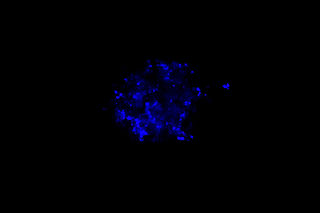
Triboluminescence is a phenomenon in which light is generated when a material is mechanically pulled apart, ripped, scratched, crushed, or rubbed. The phenomenon is not fully understood but appears in most cases to be caused by the separation and reunification of static electric charges, see also triboelectric effect. The term comes from the Greek τρίβειν and the Latin lumen (light). Triboluminescence can be observed when breaking sugar crystals and peeling adhesive tapes.

Electrostatic discharge (ESD) is a sudden and momentary flow of electric current between two differently-charged objects when brought close together or when the dielectric between them breaks down, often creating a visible spark associated with the static electricity between the objects.
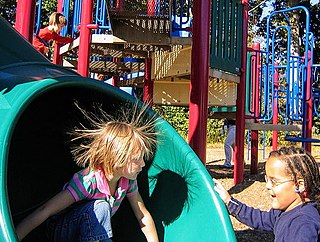
Static electricity is an imbalance of electric charges within or on the surface of a material. The charge remains until it can move away by an electric current or electrical discharge. The word "static" is used to differentiate it from current electricity, where an electric charge flows through an electrical conductor.

A Lichtenberg figure, or Lichtenberg dust figure, is a branching electric discharge that sometimes appears on the surface or in the interior of insulating materials. Lichtenberg figures are often associated with the progressive deterioration of high voltage components and equipment. The study of planar Lichtenberg figures along insulating surfaces and 3D electrical trees within insulating materials often provides engineers with valuable insights for improving the long-term reliability of high-voltage equipment. Lichtenberg figures are now known to occur on or within solids, liquids, and gases during electrical breakdown.

An electret is a dielectric material that has a quasi-permanent electrical polarisation. An electret has internal and external electric fields, and is the electrostatic equivalent of a permanent magnet.
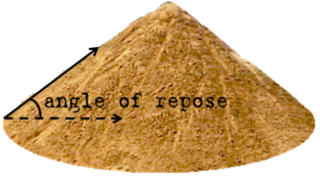
The angle of repose, or critical angle of repose, of a granular material is the steepest angle of descent or dip relative to the horizontal plane on which the material can be piled without slumping. At this angle, the material on the slope face is on the verge of sliding. The angle of repose can range from 0° to 90°. The morphology of the material affects the angle of repose; smooth, rounded sand grains cannot be piled as steeply as can rough, interlocking sands. The angle of repose can also be affected by additions of solvents. If a small amount of water is able to bridge the gaps between particles, electrostatic attraction of the water to mineral surfaces increases the angle of repose, and related quantities such as the soil strength.

An electrostatic generator, or electrostatic machine, is an electrical generator that produces static electricity, or electricity at high voltage and low continuous current. The knowledge of static electricity dates back to the earliest civilizations, but for millennia it remained merely an interesting and mystifying phenomenon, without a theory to explain its behavior and often confused with magnetism. By the end of the 17th century, researchers had developed practical means of generating electricity by friction, but the development of electrostatic machines did not begin in earnest until the 18th century, when they became fundamental instruments in the studies about the new science of electricity.

An electric spark is an abrupt electrical discharge that occurs when a sufficiently high electric field creates an ionized, electrically conductive channel through a normally-insulating medium, often air or other gases or gas mixtures. Michael Faraday described this phenomenon as "the beautiful flash of light attending the discharge of common electricity".
A nonthermal plasma, cold plasma or non-equilibrium plasma is a plasma which is not in thermodynamic equilibrium, because the electron temperature is much hotter than the temperature of heavy species. As only electrons are thermalized, their Maxwell-Boltzmann velocity distribution is very different from the ion velocity distribution. When one of the velocities of a species does not follow a Maxwell-Boltzmann distribution, the plasma is said to be non-Maxwellian.
A double layer is a structure in a plasma consisting of two parallel layers of opposite electrical charge. The sheets of charge, which are not necessarily planar, produce localised excursions of electric potential, resulting in a relatively strong electric field between the layers and weaker but more extensive compensating fields outside, which restore the global potential. Ions and electrons within the double layer are accelerated, decelerated, or deflected by the electric field, depending on their direction of motion.
A nanogenerator is a compact device that converts mechanical or thermal energy into electricity, serving as an energy harvesting solution for small, wireless autonomous devices. It taps into ambient energy sources like solar, wind, thermal differentials, and kinetic energy, enabling power generation for applications such as wearable electronics and wireless sensor networks. Nanogenerators utilize ambient background energy readily available in the environment, such as temperature gradients from machinery operation, electromagnetic energy in urban areas, or even motion vibrations during activities like walking. This approach offers a means to power low-energy electronics without the need for conventional fuel sources.
Kirthi Tennakone is a Sri Lankan scientist with an assortment of research interests in theoretical and experimental physics, chemistry and biological systems. He has authored over 350 publications covering a diverse variety of disciplines. He is the former Director of Institute of Fundamental Studies, Sri Lanka and the first Professor of Physics at the University of Ruhuna, Sri Lanka. He pursued studies leading to a doctoral degree in Theoretical Physics at the University of Hawaiʻi under supervision of Sandip Pakvasa. Pakvasa and Tennakone were the first to suggest that neutrinos may be massive and to consider the astrophysical implications. In condensed matter physics, Tennakone pioneered the studies on semiconducting properties copper(I) thiocyanate, a rare example of a transparent p-type semiconductor, currently adopted in many devices and developed techniques of its deposition as thin films. He was the first to introduce the concept of the dye-sensitized solid state solar cell and demonstrate a working prototype of the same. Sri Lanka Government recognized his contribution to research and education and awarded National Honors on two occasions. He was one of the Union of Concerned Scientists who signed to the document presented to world leaders in 1992 about environmental degradation that threatens global life support systems on this planet.
Tribofilms are films that form on tribologically stressed surfaces. Tribofilms are mostly solid surface films that result from a chemical reaction of lubricant components or tribological surfaces.
The tribovoltaic effect is a type of triboelectric current where a direct-current (DC) current is generated by sliding a P-type semiconductor on top of a N-type semiconductor or a metal surface without the illumination of photons, which was firstly proposed by Wang et al. in 2019 and later observed experimentally in 2020. When a P-type semiconductor slides over a N-type semiconductor, electron-hole pairs can be produced at the interface, which separate in the built-in electric field at the semiconductor interface, generating a DC current. Research has shown that the tribovoltaic effect can occur at various interfaces, such as metal-semiconductor interface, P-N semiconductors interface, metal-insulator-semiconductor interface, metal-insulator-metal interface, and liquid-semiconductor interface. The tribovoltaic effect may find applications in the fields of energy harvesting and smart sensing.
The Hybrid electric double layer is a model to describe the formation of electric double layer considering the contribution of electron transfer at liquid-solid interface, which is firstly proposed by Wang et al. in 2018.The major difference between the hybrid EDL model and the traditional EDL model is that the hybrid EDL model considers that there are both electrons and ions on the solid surface in the EDL, while the traditional EDL model considers that the solid surface has only adsorbed ions.

Zhong Lin Wang is a Chinese-American physicist, materials scientist and engineer specialized in nanotechnology, energy science and electronics. He received his PhD from Arizona State University in 1987. He is the Hightower Chair in Materials Science and Engineering and Regents' Professor at the Georgia Institute of Technology, US.
